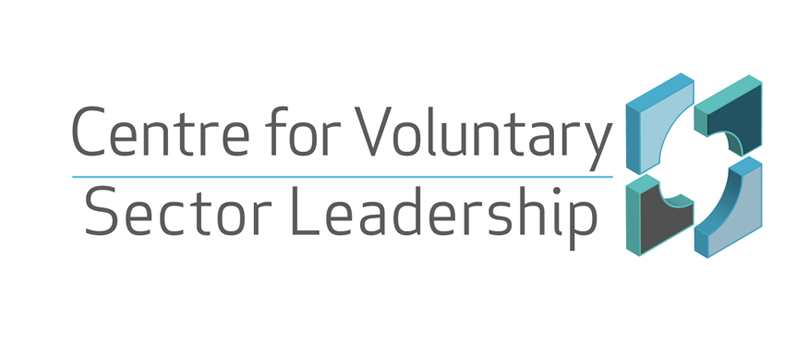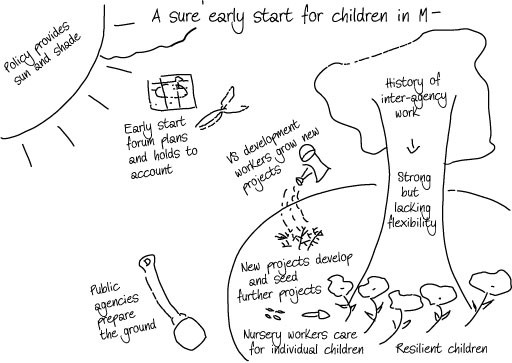3.3 Leadership as the management of tensions
This third idea explores leadership as the management of tensions. At the heart of this idea is the concept of a tension between ‘collaborative advantage’, and ‘collaborative inertia’ (Huxham and Vangen 2005). Organisations enter collaborations to achieve collaborative advantage, something they could not achieve alone. But in practice, all too many collaborations fall into collaborative inertia – they progress slowly, achieve little, disintegrate into sectional interests and fail.
For example, the collaborative advantage of coordinating support to refugees might be that more refugees receive help, or that the needs of refugees are met more holistically than organisations could achieve if working alone. Identifying the actual or potential collaborative advantage of a collaboration is an important task for those involved in leading collaborative projects, working groups and partnerships. Indeed, if it is impossible to identify the potential collaborative advantage of a specific collaboration, then you may want to ask why it is happening at all.
However, all too often collaborative partnerships and projects become stuck in discussions about terms of reference, the processes of decision-making, and structural arrangements. Individuals find it impossible to reconcile the demands of their organisation and the need to achieve collaborative arrangements which involve compromise, and the ceding of power. Discouraged by slow progress and lack of achievement, individuals disengage from the collaboration, reinforcing the tendency to fail. The challenge for leadership is to manage the tension between the potential for collaborative advantage and the tendency towards collaborative inertia (Huxham and Vangen, 2005).
Activity 5 Advantage and inertia
Identify one example of collaboration with another organisation which features regularly in your diary (or select an example from Ellen’s story). You will work on this example through the rest of this week’s study. Try to identify an example that is part of a long-term inter-organisational collaboration. For example,
- participating in an inter-agency forum
- managing joint service delivery
- delivering an inter-agency plan for clients with complex needs
- negotiating and delivering a shared action plan with organisations working in a locality
- designing, delivering, and monitoring a joint funding bid
- developing a joint needs assessment that informs the ongoing work of collaborating organisations.
First identify the potential collaborative advantage of this collaboration. Write this down in 50 words or less.
Now identify the potential areas of collaborative inertia. Again write this down in 50 words or less.
Finally, identify any actions you might take that increase the likelihood of collaborative advantage and reduce the tendency towards collaborative inertia. Try to focus here on what you can do, rather than on the factors that constrain your actions.
You will continue to explore this idea of managing tensions in the next activity.
Activity 6 Tensions, compromises, and trade-offs
Return to the collaboration you identified in Activity 5. Respond to the following questions in your learning journal [Tip: hold Ctrl and click a link to open it in a new tab. (Hide tip)] (or if you focused on an example from Ellen’s story, then try to imagine yourself in her position in this activity):
- what kind of tensions arise in this context?
- what compromises and trade-offs do you find yourself making?
- are you comfortable with these compromises from your own perspective and from the perspective of your organisation?
Make sure you title the post with the week number and the number of this activity, Week 6 Activity 6.
In the following activity, you will apply the picture of collaboration as a garden to your own context.
Activity 7 Nurturing the collaboration garden
In this activity, you will continue to think about the collaboration you identified in Activity 5, creating a picture of a garden to help you reflect on how the organisations and individuals involved in this collaboration contribute to its nurturing. We have provided you with a template to help you complete this activity.
- First, reflect on what this example of inter-organisational collaboration is trying to achieve, and give your collaboration garden a name that reflects this purpose. For example, the garden of child wellbeing in Leicester or the garden of an active older life in York.
- Next think about the kind of plants that the organisations involved in the collaboration are trying to grow together. Label these plants in the diagram. For example, a tree might represent a shared database or an agreed plan of action. Flowers might represent a healthier local population, more children engaged in sport or better access to art, heritage or the theatre. Try to be as specific as possible as you label the plants in your garden.
- Finally, think about how the organisations involved in the collaboration bring different skills, resources, and expertise to nurture the garden. This is the watering, feeding, pruning and tending of the garden. Draw in these activities, and think about the different ways in which organisations and individuals nurture the collaboration.
Try to be as creative as possible in drawing your garden, then take a photo of your picture and post it on our discussion forum. Add a comment on how drawing your garden has helped you think about the nurturing of this particular example of inter-organisational collaboration. Make sure you post your comments within the correct thread for this activity. You may also want to write about this at greater length in your learning journal.
3.2 Integrative leadership

